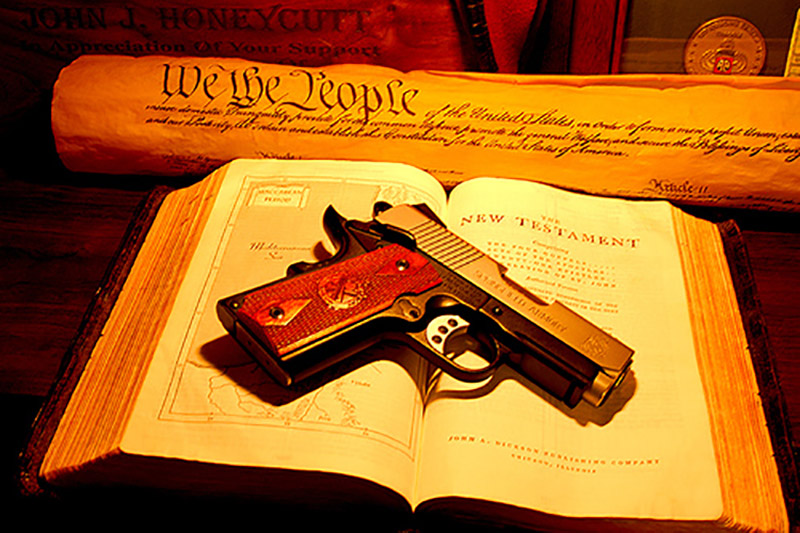Second Amendment Bible

The Second Amendment of the United States Constitution stands as a cornerstone of American democracy. Often revered as a sacred tenet within the constitutional bible that governs the nation. Adopted on December 15, 1791, along with the rest of the Bill of Rights . This brief yet powerful statement has sparked debates, legal battles, and philosophical discussions for centuries. In this article, we delve into the historical context, interpretation, and contemporary significance of the Second Amendment as it has evolved into a fundamental aspect of American identity.
Table of Contents
ToggleHistorical Roots:
To comprehend the significance of the Second Amendment . One must first delve into the historical roots that prompted its inclusion in the Bill of Rights. The framers of the Constitution, having witnessed the tyranny of British rule . Sought to establish a framework that guaranteed individual freedoms and protected citizens from the potential abuse of governmental power. The Second Amendment emerged from a collective consciousness shaped by the Revolutionary War and the necessity for a well-regulated militia to ensure the security of a free state.
The Text:
The concise wording of the Second Amendment reads: “A well-regulated Militia, being necessary to the security of a free State . The right of the people to keep and bear Arms, shall not be infringed.” The dual nature of the amendment, addressing both the importance of a militia and the individual right to bear arms. has fueled interpretive debates throughout history. The emphasis on a “well-regulated” militia has led to discussions about the intended balance between individual rights and societal interests.
Individual Rights vs. Collective Security:
The crux of the Second Amendment debate lies in the tension between individual rights and the collective security of the nation. Advocates of individual rights argue that the amendment guarantees citizens the right to bear arms for personal protection and self-defense. On the other hand, those emphasizing collective security contend that the language of the amendment implies a connection between the right to bear arms and the formation of a militia . Suggesting a communal responsibility for the nation’s defense.
Landmark Legal Cases:
The interpretation of the Second Amendment has been shaped significantly by landmark legal cases that have reached the Supreme Court. In the 2008 case of District of Columbia v. Heller, the Court held that the Second Amendment protects an individual’s right to possess a firearm for self-defense within the home. The decision marked a pivotal moment in affirming the individual rights perspective, yet it also acknowledged that reasonable regulations on firearm ownership could be imposed.
Contemporary Debates:
The Second Amendment continues to be a focal point of contemporary debates on gun control, public safety, and individual liberties. Mass shootings, high-profile incidents, and the ongoing challenge of balancing public safety with individual rights have intensified discussions on the necessity for gun regulation. Advocates for stricter gun control measures argue that the Second Amendment should be interpreted in a way that addresses the modern realities of gun violence . While staunch defenders of gun rights insist on preserving the original intent of the framers.
Cultural Significance:
Beyond legal and political dimensions, the Second Amendment holds cultural significance in the United States. It has become ingrained in the American identity, symbolizing self-reliance, frontier spirit, and the right to resist tyranny. The gun culture in America, rooted in historical necessity and perpetuated through generations . Is deeply intertwined with the values enshrined in the Second Amendment.
Challenges and Compromises:
As the nation grapples with evolving societal challenges . Finding a balance between the rights of individuals and the safety of the community remains a complex task. Striking compromises that address concerns from various perspectives is crucial to navigating the intricate web of Second Amendment debates. Balancing personal freedoms with public safety requires a nuanced approach that respects the constitutional principles while adapting to the needs of a dynamic society.
Conclusion:
In the grand narrative of American history, the Second Amendment stands as a pillar of the nation’s constitutional framework. Earning its place in the metaphorical “constitutional bible.” Its historical roots, nuanced text, and evolving interpretation reflect the complexities of safeguarding individual liberties while ensuring collective security. As the United States grapples with the challenges of the 21st century . The Second Amendment continues to be a touchstone for discussions on the delicate balance between individual rights and the common good . Embodying the enduring spirit of a nation shaped by its constitutional ideals.






